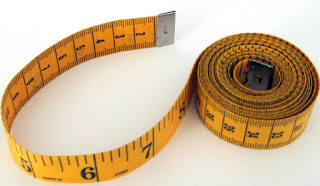Measurements
1.general physics
1.1 length and time
-i-Physical Quantity
Physical Quantities
A physical quantity is a property of an object that can be measured with a measuring instrument.
A physical quantity is usually expressed as “a magnitude (numerical value) and a physical unit or more”
Example:-
Normal body temperature of a healthy human being is 37 0C
-ii-Length
Measuring Length.
Length is “the distance between two points in a space”.
According to SI units, the length quantity is expressed in meter.
There are several kinds of measuring devices used to measure quantity of length, among others, are as follows.
Tools used…
Measurement of length
Length is measured accurately through many methods. Here are some:
| Method | Notes | |
| Ruler | Used to make simple measurements accurate to 0.1 cm (1 mm) | |
| Vernier caliper | Used to make simple measurements accurate to 0.01 cm(0.1 mm) | |
| Micrometer screw gauge | Used to make simple measurements accurate to 0.001 cm(0.01 mm) |
How to measure length using a vernier caliper
- Place the object between the jaws of the vernier caliper
- Measure and note the length of the object on the main scale by looking at the left of the 0 on the vernier scale.
- This tells you the length in millimetres.
- Now, observe the vernier scale;
- Find the point where one of the markings on the vernier scale is exactly aligned with one on the main scale
- This tells you the fraction of a millimetre that you must add to the main scale reading.
How to measure length using a micrometer screw gauge
- Read the main scale to nearest 0.5mm
- Read the additional fraction of a millimetre from the fractional scale.
- Add both the readings and get the thickness of the object
Measurement of volume
| Measuring regular shaped objects | Use formulae to find their volumes;
if it is a cube, then measure the length of one side and multiply it by 3
|
| Measuring irregularly shaped objects | Use displacement method:
a. Pour some water in the measuring cylinder and record its volume (V1).
b. Submerge the object in the water.
c. Record the reading of the water level in the cylinder (V2).
d. Use the formula Vx=V1-V2 to find the volume of the object.
|
| Measuring liquids | Use a measuring cylinder |
Density
Density is the ratio of mass to volume for a substance.
Measuring density
The most accurate way to calculate the density of any solid, liquid or gas is to divide its mass in kilograms by its volume (length × width × height) in cubic meters.
Density is calculated using the equation:
Density=Mass/ volume
The unit for density is kg/m3.
Facts on density
- Gases have lower densities than liquids
- Density of water is 1000 kg/m3
- Density depends on the composition of the material
- The amount of a metal in an alloy is found by measuring its density
Time
Measuring Time.
- Very long period of times as years, months, weeks, and days can be counted easily.
- Very short times “fractions of seconds” can be calculated by measuring time for a certain number of pulses, or movements, and then divide this time by the number of pulses.
Tools used
a) Stop clock
b) Stopwatch
Tip: Calculation of a period or very short period of time
For measuring short intervals of time (when each period is the same), multiple measurements can be taken and then averaged
e.g. Period of a pendulum = Time for 10 oscillations / 10
Measure the time needed for n complete swings in T seconds
Periodic time = T/n
Example- 30 swings in 60 seconds
Time of one swing=60 s/ 30 swings = 2 seconds.
Notes:
a) Time of one complete swing is measured when the string starts its motion from one end and returns back to the same starting point.
b) Remember there is always a reaction time associated with using a clock or stopwatch
c) To obtain an accurate record (result) you have to repeat the experiment several times and calculate the average value of your results.
d) If the length of the string is changed, the periodic time will be also changed, as length of pendulum string increases, its periodic time increases.
- Very long period of times as years, months, weeks, and days can be counted easily.
- Very short times “fractions of seconds” can be calculated by measuring time for a certain number of pulses, or movements, and then divide this time by the number of pulses.
a) Stop clock
b) Stopwatch
Tip: Calculation of a period or very short period of time
For measuring short intervals of time (when each period is the same), multiple measurements can be taken and then averaged
e.g. Period of a pendulum = Time for 10 oscillations / 10
Measure the time needed for n complete swings in T seconds
Periodic time = T/n
Example- 30 swings in 60 seconds
Time of one swing=60 s/ 30 swings = 2 seconds.
Notes:
a) Time of one complete swing is measured when the string starts its motion from one end and returns back to the same starting point.
b) Remember there is always a reaction time associated with using a clock or stopwatch
c) To obtain an accurate record (result) you have to repeat the experiment several times and calculate the average value of your results.
d) If the length of the string is changed, the periodic time will be also changed, as length of pendulum string increases, its periodic time increases.







Comments